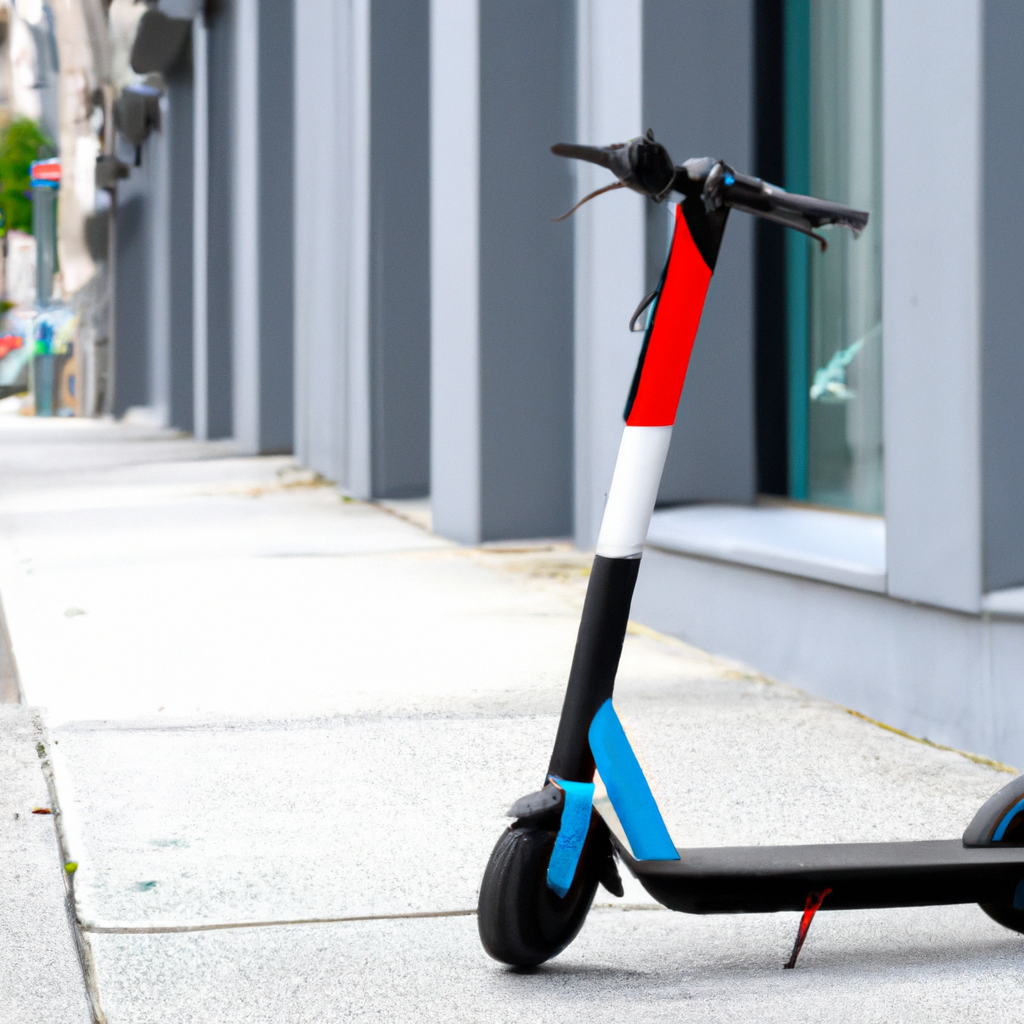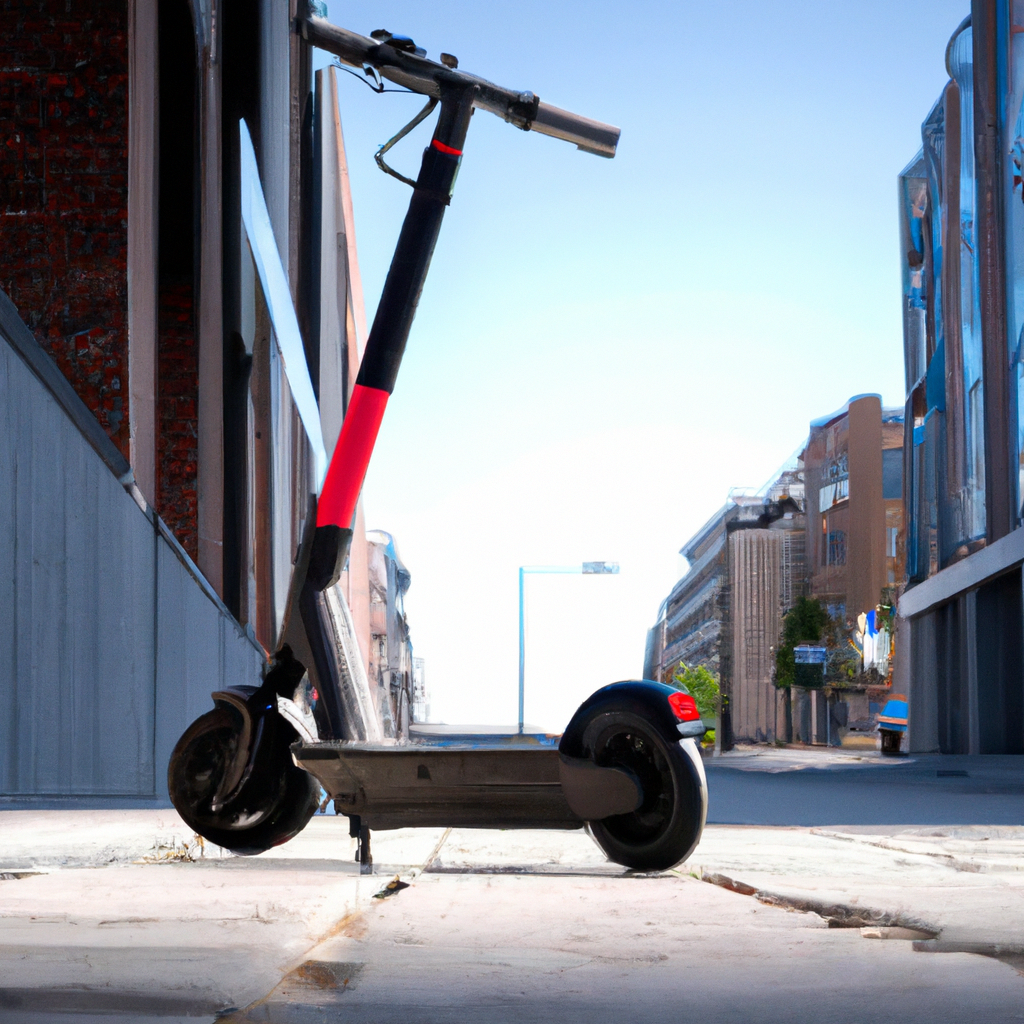If you’ve ever wondered about the rules and regulations surrounding electric scooters on sidewalks, you’re not alone. With their increasing popularity as a convenient and eco-friendly mode of transportation, it’s important to know where and how to ride them safely. In this article, we’ll explore whether electric scooters are permitted on sidewalks, providing you with the knowledge you need to navigate the streets and paths confidently. So, let’s hit the road (or sidewalk!) and unravel the mystery behind this buzzing phenomenon.
Legal Framework for Electric Scooters
Local Laws and Regulations
When it comes to electric scooter usage, the legal framework varies on a local level. Different cities and municipalities have their own set of rules and regulations that govern the use of electric scooters. These local regulations can include guidelines on where scooters can be ridden, speed limits, and parking restrictions. It is important to familiarize yourself with the specific laws in your area to ensure that you are using electric scooters in compliance with local regulations.
State Laws and Regulations
In addition to local regulations, states also have their own laws governing electric scooter usage. These laws may provide additional guidelines or restrictions on top of the local regulations. State laws can cover a wide range of aspects such as licensing requirements, age restrictions, and helmet usage. It is crucial to familiarize yourself with both the local and state laws to ensure that you are abiding by all applicable regulations.
National Laws and Regulations
While electric scooter regulations primarily fall within the jurisdiction of local and state governments, there are also national laws that come into play. These laws primarily focus on safety standards for electric scooters, such as requirements for lighting, braking systems, and maximum speed limits. National regulations ensure that electric scooters meet certain safety standards to protect both riders and pedestrians. Make sure to check if there are any national regulations in your country to ensure that the electric scooter you are using complies with these standards.
Sidewalk Rules vs. Road Rules
Different Rules for Different Areas
One key aspect to consider when using electric scooters is the difference in rules between sidewalks and roads. In many cities, electric scooters are not allowed on sidewalks due to safety concerns. They are instead expected to be ridden on the road along with bicycles and other vehicles. However, there are also instances where certain cities allow electric scooters on sidewalks, especially when there are no designated bike lanes available.
Understanding the Definitions
To navigate the rules and regulations surrounding electric scooters, it is important to understand the definitions used. In many areas, electric scooters are classified as “low-speed electric bicycles” or “electric personal assistive mobility devices.” These classifications determine whether electric scooters are considered vehicles that can ride on the road or whether they are treated more like pedestrians. Understanding how your electric scooter is classified can help you determine where it is allowed to be ridden.

Safety Concerns and Considerations
Pedestrian Safety
One primary concern with allowing electric scooters on sidewalks is the potential impact on pedestrian safety. Sidewalks are traditionally designated for pedestrians, and the introduction of electric scooters can increase the risk of accidents and collisions. Pedestrians may not always be aware of fast-moving electric scooters approaching behind them, which can lead to unexpected collisions. It is important for scooter riders to be mindful of pedestrians and give them the right of way to ensure the safety of everyone using the sidewalk.
Scooter Rider Safety
While pedestrian safety is crucial, it is equally important to consider the safety of electric scooter riders. When electric scooters are not allowed on sidewalks, riders are often forced to navigate through heavy traffic on the road. This can expose them to a higher risk of accidents with larger vehicles. To promote safety, riders should wear protective gear such as helmets, follow the designated bike lanes when available, and be cautious of their surroundings.
Local Regulations and Enforcement
City-Specific Rules
As mentioned earlier, local regulations play a significant role in electric scooter usage. Each city may have its own specific rules regarding where electric scooters can be ridden, speed limits, and parking guidelines. Some cities may have dedicated bike lanes or scooter lanes, while others require electric scooters to be ridden on the road. It is essential to familiarize yourself with the rules specific to your city to ensure that you are riding electric scooters in compliance with local regulations.
Enforcement Practices
Enforcement of electric scooter regulations can vary from city to city. Some cities may have designated scooter enforcement officers who actively monitor scooter usage and issue citations for violations. Others may rely on reports from the public to address any issues with scooter riders. It is important to be aware of the enforcement practices in your city and understand the potential consequences of violating the regulations.

Arguments for Allowing Electric Scooters on Sidewalks
Promoting Sustainability and Reducing Traffic Congestion
One argument for allowing electric scooters on sidewalks is the promotion of sustainability and reduction of traffic congestion. By allowing scooters on sidewalks, it provides an alternative mode of transportation for short distances, reducing the need for cars and contributing to a greener environment. Additionally, electric scooters are compact and nimble, making them ideal for navigating through dense urban areas and reducing traffic congestion.
Easier Accessibility for Certain Individuals
Allowing electric scooters on sidewalks can also improve accessibility for certain individuals. People with mobility issues or disabilities may find it easier to use electric scooters on sidewalks rather than navigating through busy streets. Electric scooters can provide a convenient and efficient mode of transportation for those who may not have the ability to walk long distances or use public transportation.
Arguments Against Allowing Electric Scooters on Sidewalks
Increased Risk of Accidents and Collisions
One of the main arguments against allowing electric scooters on sidewalks is the increased risk of accidents and collisions. Sidewalks are typically crowded with pedestrians, and the introduction of fast-moving electric scooters can lead to accidents and injuries. Pedestrians may not always hear or see the scooters approaching, increasing the likelihood of collisions. Allowing electric scooters on sidewalks could potentially compromise the safety of pedestrians.
Pedestrian Right-of-Way and Safety
Sidewalks are designed primarily for pedestrians, and allowing electric scooters to share the space can raise concerns about pedestrian right-of-way and safety. Pedestrians should be able to navigate sidewalks without the worry of encountering fast-moving scooters that may compromise their safety. Keeping sidewalks reserved for walking can help maintain a safe and comfortable environment for pedestrians.

Alternative Solutions and Compromises
Creating Dedicated Scooter Lanes
As a compromise between allowing electric scooters on sidewalks and prioritizing pedestrian safety, some cities have implemented the creation of dedicated scooter lanes. These lanes provide a designated space for electric scooters, allowing them to travel safely without disrupting pedestrian traffic. By designating specific lanes for scooters, cities can strike a balance between promoting alternative transportation and maintaining pedestrian safety.
Implementing Speed Restrictions on Sidewalks
Another potential solution to address the safety concerns of allowing electric scooters on sidewalks is implementing speed restrictions. By limiting the maximum speed at which electric scooters can travel on sidewalks, cities can mitigate the risk of accidents and collisions. This ensures that scooters are traveling at a safe and manageable speed, minimizing the impact on pedestrian safety.
Best Practices for Scooter Riders
Follow Local Rules and Regulations
Regardless of where electric scooters are allowed, it is essential for scooter riders to follow local rules and regulations. This includes riding in designated areas, obeying speed limits, and parking responsibly. By adhering to the rules, electric scooter riders can contribute to a safer and more harmonious environment for all road users.
Exercise Caution and Courtesy
In addition to following the rules, scooter riders should exercise caution and courtesy on the road or sidewalk. This includes being aware of their surroundings, signaling their intentions, and yielding to pedestrians when necessary. By adopting a mindset of safety and consideration for others, scooter riders can help build a positive image for electric scooter usage and promote a culture of respectful coexistence with pedestrians and other road users.

Trends and Developments in Electric Scooter Regulations
Changes in Laws and Policies
The regulations surrounding electric scooters are continuously evolving as cities and governments adapt to the rise in their popularity. Changes in laws and policies can include updates to speed limits, parking regulations, and Class II electric scooter classifications. It is crucial for electric scooter riders to stay informed about the latest developments in the regulations to ensure that they are in compliance with the most up-to-date rules.
Partnerships with Ride-Sharing Companies
Another significant trend in electric scooter regulations is the partnerships between cities and ride-sharing companies. Many cities have established agreements with ride-sharing companies to ensure that electric scooters are managed effectively. These partnerships often involve regulations on fleet size, parking, and data sharing to facilitate the integration of electric scooters into the existing transportation infrastructure.
Conclusion
Navigating the legal framework and regulations surrounding electric scooters can be complex, but it is crucial for riders to comply with local, state, and national laws. Understanding the differences between sidewalk and road rules, considering safety concerns, and following best practices is essential for a positive electric scooter experience. As regulations continue to evolve and alternative solutions are explored, electric scooters have the potential to become a convenient and sustainable mode of transportation while ensuring the safety of pedestrians and riders alike.


